Writer Serena Coady spent one week hiking solo in Shetland, tracing parts of the Sanler route. She watched seals sunbathe on white sand beaches, walked among ancient ruins, and spent time with a mother-daughter farming team
This story is part of our Tales from a Slow Way series. Each ‘Tales’ award includes a donation to the organisation as well as a project fee to the creative. Serena’s project donation went to Shetland Young Farmers.
I arrive in Lerwick, Shetland’s main town, at 7am sharp. I’ve managed to catch a startling amount of sleep on the 14-hour ferry crossing from Aberdeen. There are direct flights, sure, but I find that the oceanic voyage gives you the time and space to better appreciate the sheer isolation of these lands. It is also cheap.
I walk from the ferry terminal to the town centre of Lerwick. Lerwick – and as I soon discover, the rest of Shetland – is a place where you acknowledge the people you pass in the street. Whether it’s a smile or a “Hi!”, I am constantly reminded that I am far, far away from London.
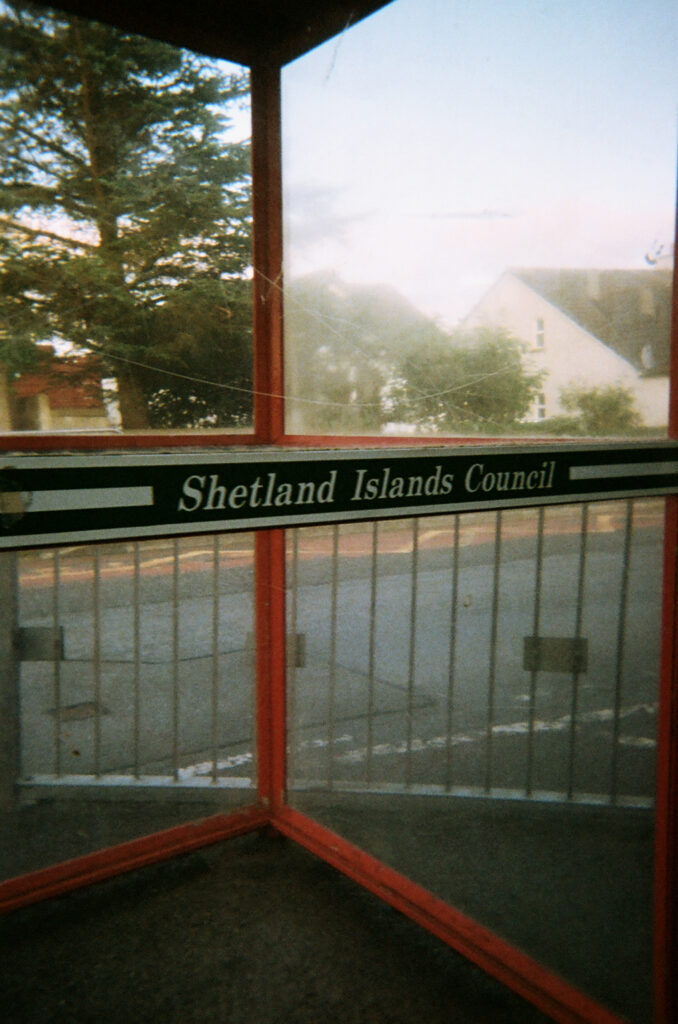
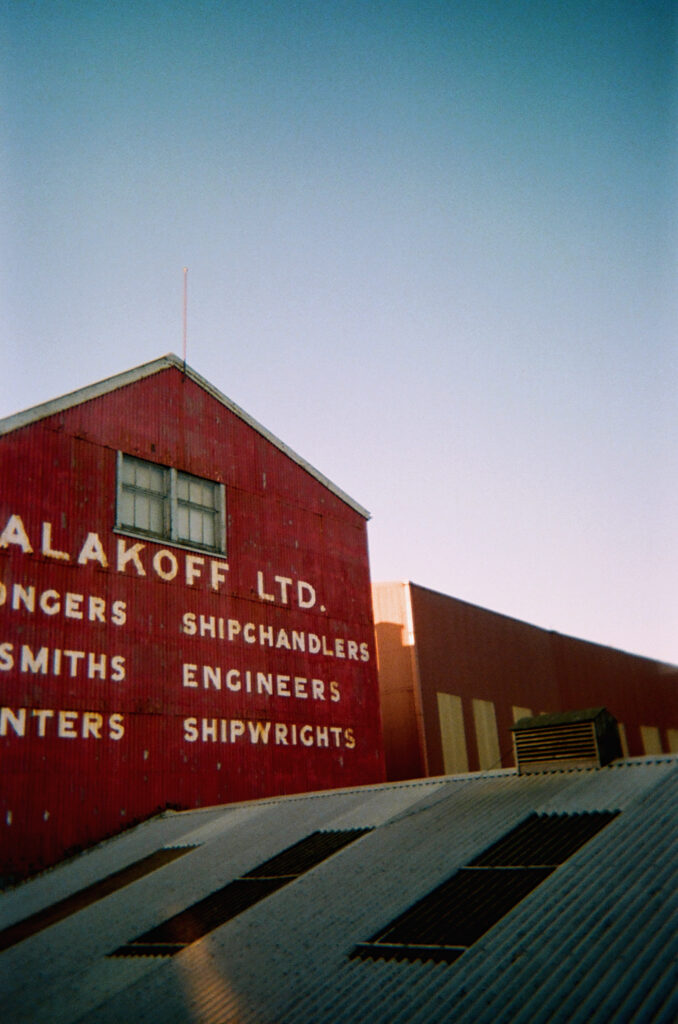
Being unfashionably early for the guest-house check-in, I determine what it is that I absolutely need in my pack that day. I figure it’s okay to bring one book, instead of four, and two Toblerones instead of five (I later learn that three Toblerones would’ve been the magic number).
While I’m reshuffling my belongings around in the guesthouse lobby I meet two women, one from Australia, and one from the United States. They’re in Shetland on a knitting holiday. These are very, very popular here. The Australian woman instantly recognises my accent as being similar to her own — there’s a little thrill in two people from a remote island being united on another remote island on the other side of the world.
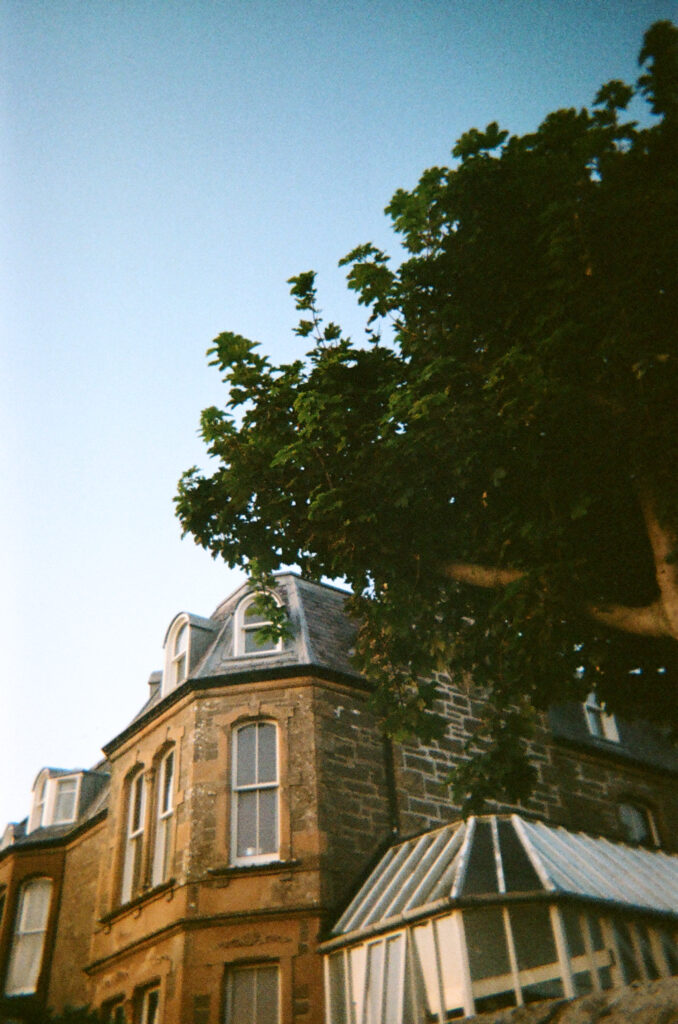
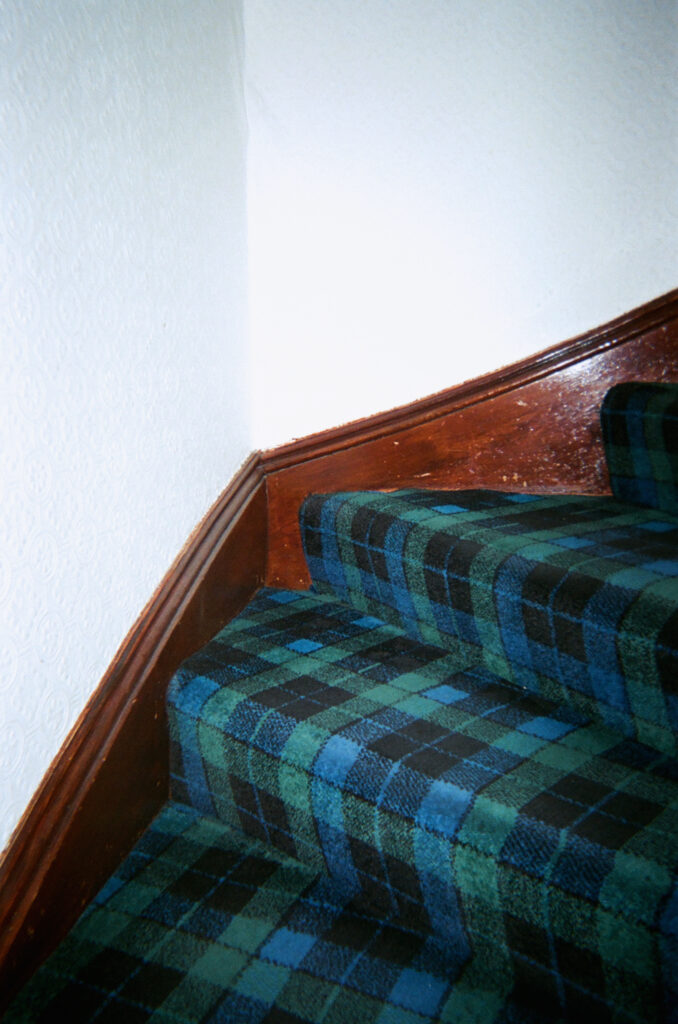
I walk into town with a new lightness to my step. My pack weighs a third of what it did when I got off the boat from Aberdeen. I visit the tourist office, chat with some locals, and get my hiking boots fitted with new insoles (high arches be damned!) Then I take a 10-minute ferry ride to the Isle of Bressay (pronounced ‘Bressa’ – I am told to drop the y), study one of the five maps I was armed with during my visit to the tourist office, and take a breath, watching the sunny town of Lerwick and its fishing boats become smaller.
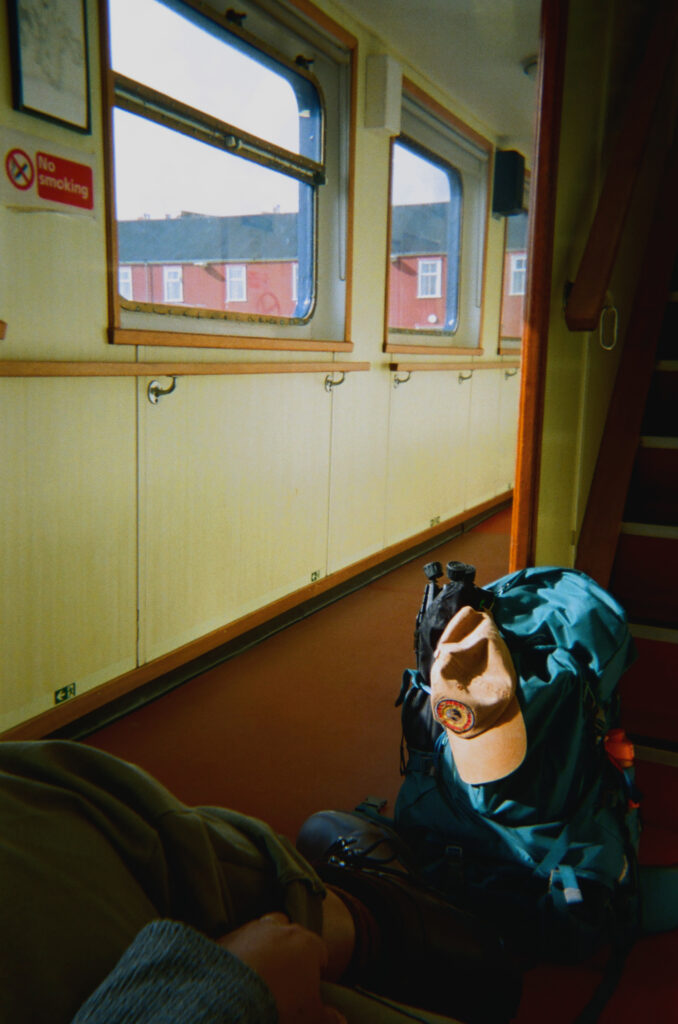
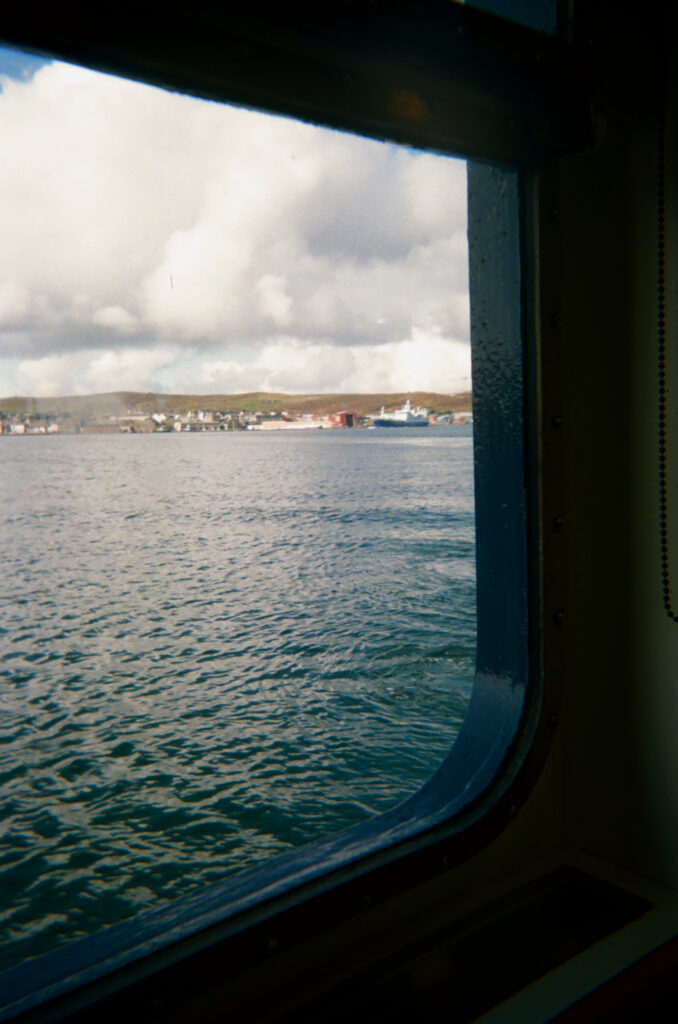
In the car park at Bressay’s ferry port, a woman watches me. At first, she thinks I’m going to pick up a car, but when she realises that I’m just wandering about she offers me a ride. I hesitate, not because I’m someone who rules out rides from strangers, but because I worry that if I’m driven – even part of the way – it will detract from the beauty of walking and I’ll miss something precious. Then she tells me there’s one single store on the island, and it’s a charity shop. I am not one to refuse such an offer.
Inside the former primary school turned bric-a-brac shop, Janet tries on jackets, laughing to herself, saying she absolutely doesn’t need another one. The jacket suits her perfectly, so I spur her on. I come across a collection of books, fantasy novels from the 1980s and reams of birdwatching manuals, and set myself a purchase limit of one (it’s a non-fiction book about love, and I already own it). I learn that Janet has recently moved here from Nigeria. She’s in Bressay to work as a carer, but isn’t sure for how long. However, she seems prepared, as she’s really into layering at the moment.
Janet has recently moved here from Nigeria. She seems prepared, as she’s really into layering at the moment.
Layers are crucial, she says. Even after being here for only two summer months, she knows that the weather can rapidly switch up. “It’s a four seasons in a day kind of place,” says Janet. It seems I have chosen the opportune moment to visit Shetland; that day, and the four days that follow, there isn’t a single drop of rain.
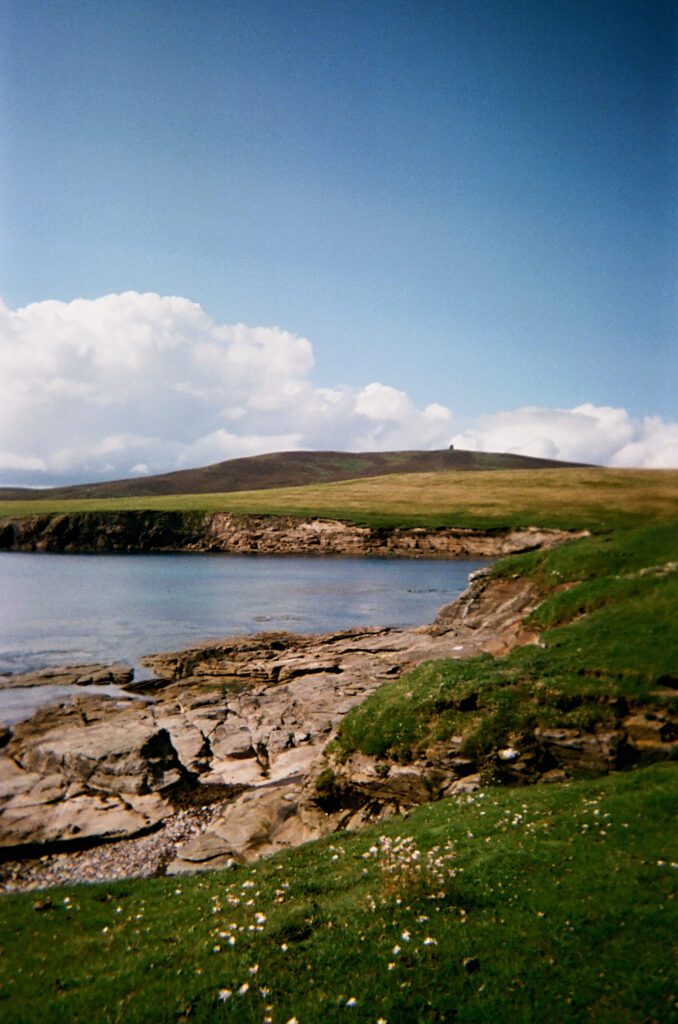
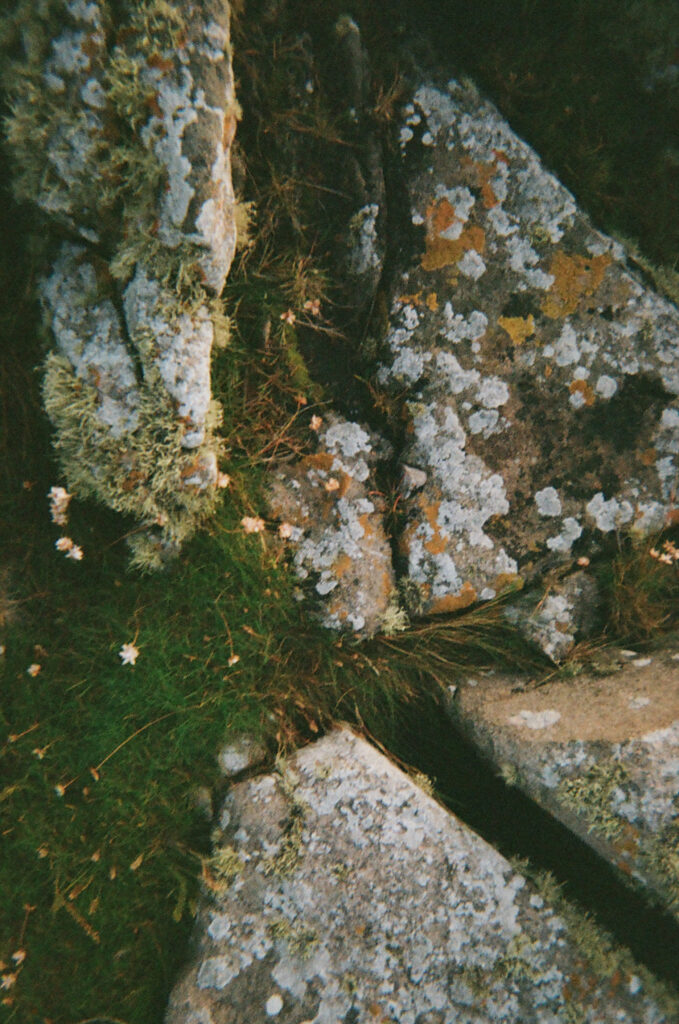
I buy the book, bid Janet farewell, and continue my walk across Bressay’s fine mid-section. On Shetland’s fifth-largest island, there are ancient stone ruins, croft houses, farms, and an old castle on the hill. I see them all, but what I see even more of is cows. Plenty of them. They see me too, and I mean really see me.
I don’t know if they’re staring because they have an innate ability to sense I’m not from around here, or because they think my baseball cap is kind of an ‘off’ fit for my head. It might just be one of those things where they’re staring because I’m staring. I pass a field where a cow is rubbing its back on a telephone wire – just really, really getting into it. And I think: I am just like you. We are the same.
Right in time, I spot my first Shetland pony in the distance. It’s not my first ever sighting of a Shetland pony, but it is my first here. I can’t quite describe how wonderful it feels to bear witness to one of these miniature beauties on their home turf. But I’ll try. There’s a flash of icy blonde hair, a shimmy to ward off a pack of flies, and a rebellious stomp of a tiny horse leg — it’s magic.
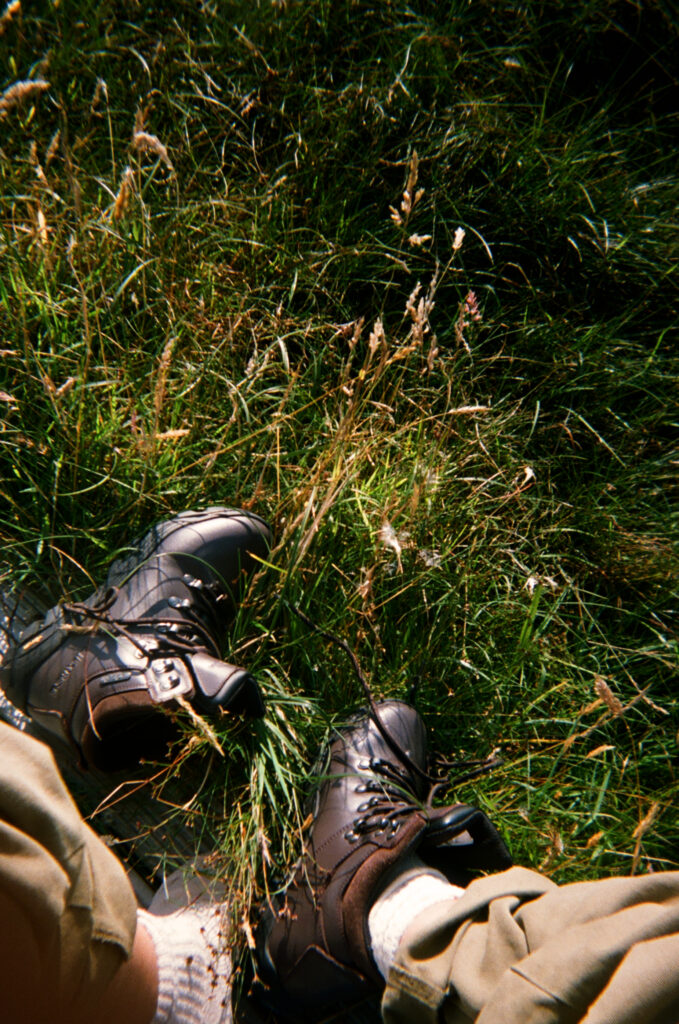
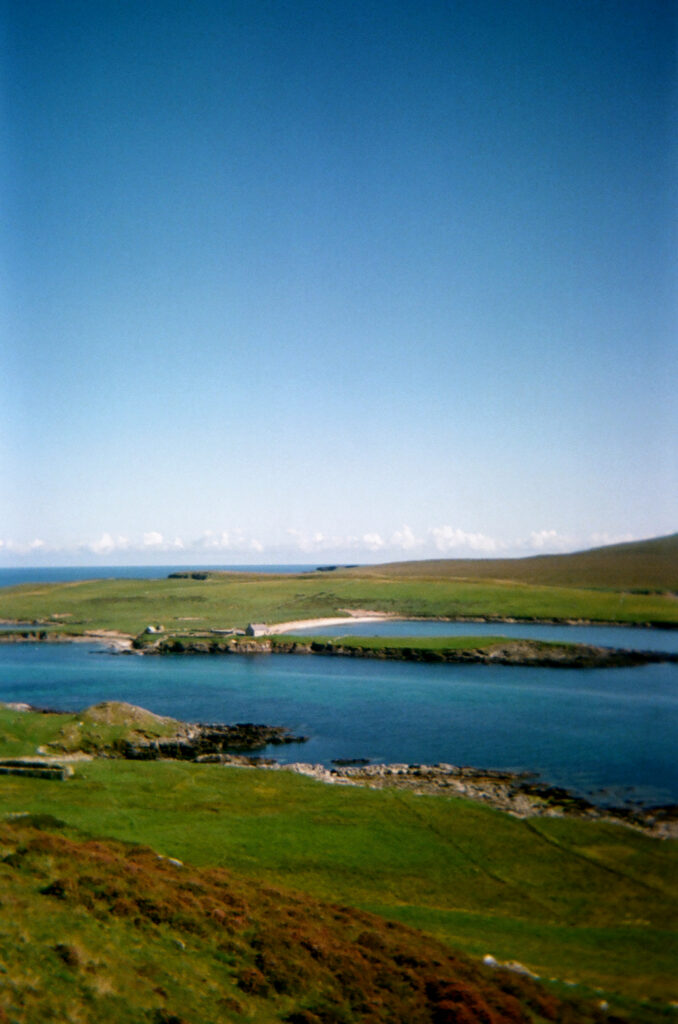
It’s another two-and-a-half miles to the eastern side of Bressay, where I’m told you can take a three-minute boat ride to the neighbouring isle of Noss, a nature reserve known for its migratory seabirds. You simply show up, wave the boat over, and pay your fare in cold hard cash. This is the very last day of the season. From tomorrow, the boat will no longer make the crossing.
Once I arrive at Noss, I am told that looking for puffins would be a fruitless quest. The birds retired to different tides just five days prior. Still, I search and I hope. I walk across the paddocks and up over the hills with purpose, casting my eye across treeless fields of grass, towering sea cliffs, and the cerulean sea. Walking the full perimeter of Noss takes me a little over two hours and I only see three other people. The small island rewards my desperation to catch a glimpse of wildlife and offers up two playful seals. I am most grateful.
At the end of my first day in Shetland, I almost pass out in my guesthouse bed at a child’s bedtime of 6.30pm – boots and all. Nevertheless, I gather the strength to go out and eat something. I head to a local Indian restaurant and enjoy one of the most delicious vegetable kormas I’ve ever had. On the walk back to the guest house I stroll out along the rockpools by Lerwick’s town centre, taking in the green pastures across the bay and the sky’s dusty pink hues.
In the corner of my eye, I catch a flicker of movement, thinking it’s a duck. I look closer and it’s a seal, playfully twirling in the waves. It slips beneath the surface as if it knows what’s coming. Suddenly, the waves shift from calm to purposeful. They surge towards me, gracefully, as if the sea is a sheet of silk that has been thrown into the air and is falling back to the ground.
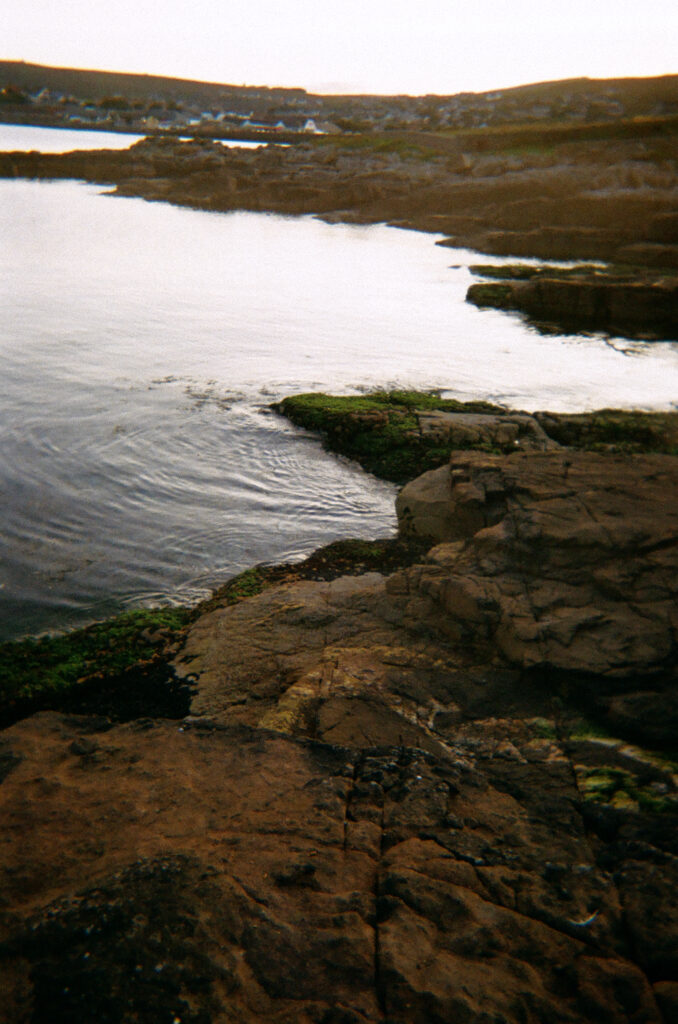
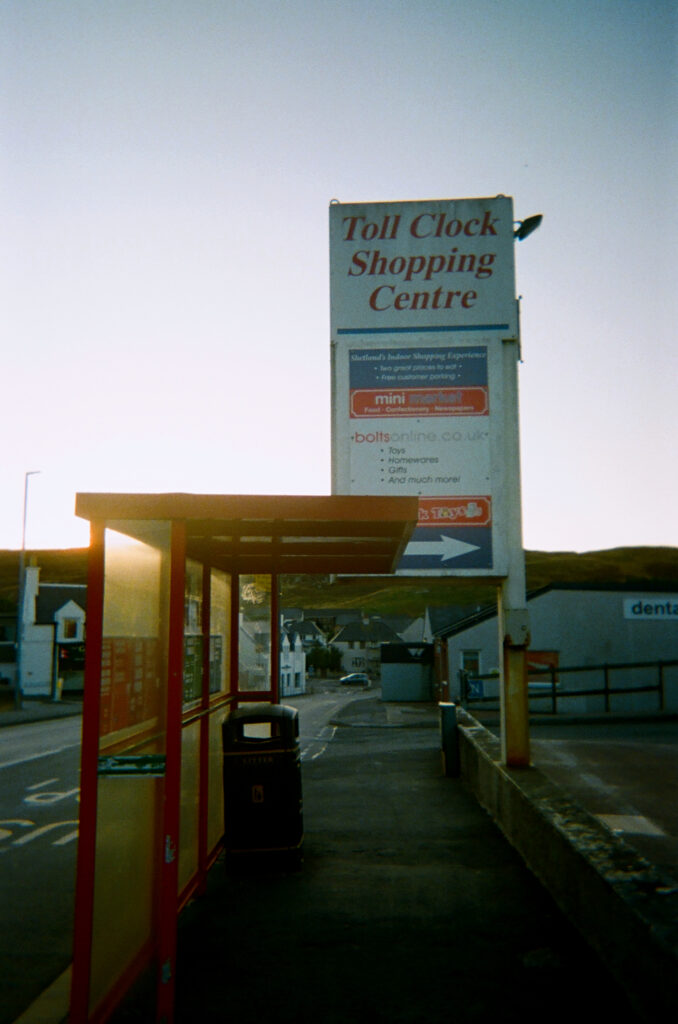
The next morning, I’m up early. I eat two fried eggs and begin my journey to Quendale Farm. I ride the local bus (highly recommend) from Lerwick to Bigton and get off near St Ninian’s Isle, a sand causeway with the ruins of a chapel burrowed into the isle. The walk from St Ninian’s to Quendale Farm is almost seven miles and offers panoramic views of Shetland’s coastline.
When I first moved here and I looked at the view, I thought, is this something that you will ever take for granted? Will you ever not notice it?
The farm is located in one of the island’s most picturesque regions. It’s surrounded by a historic watermill, rolling green hills, and a beach, which happens to be Shetland’s longest. “It’s such a beautiful place. I mean, when I first moved here and I looked at the view, I thought, is this something that you will ever take for granted? Will you ever not notice it? But that never happens,” says Hilary, who runs the farm with her husband Martin, daughter Emma, and three employees.
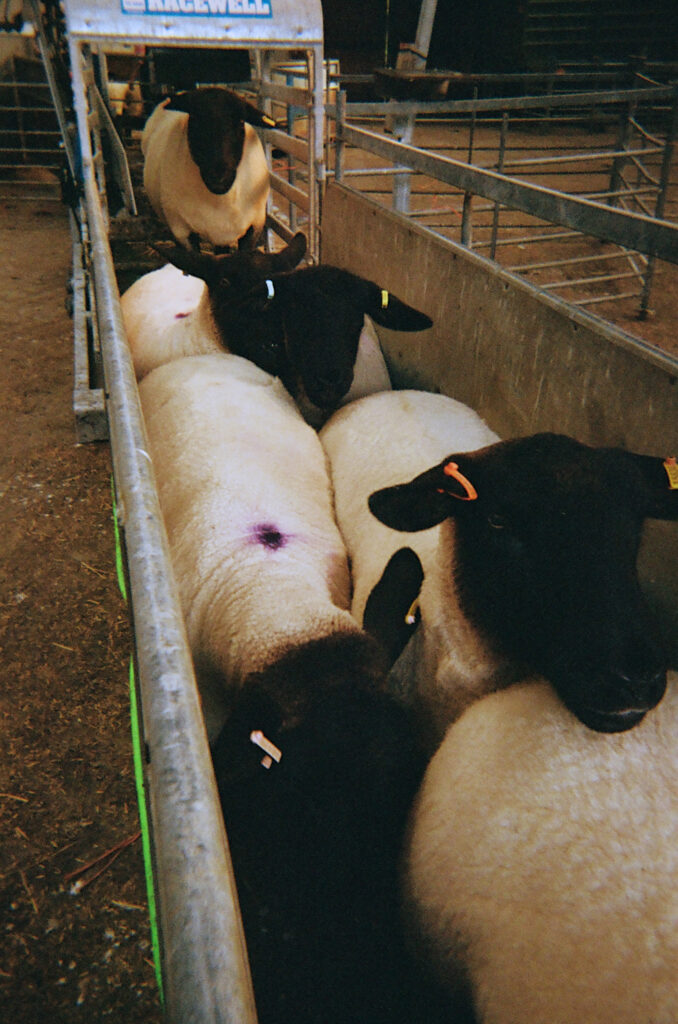
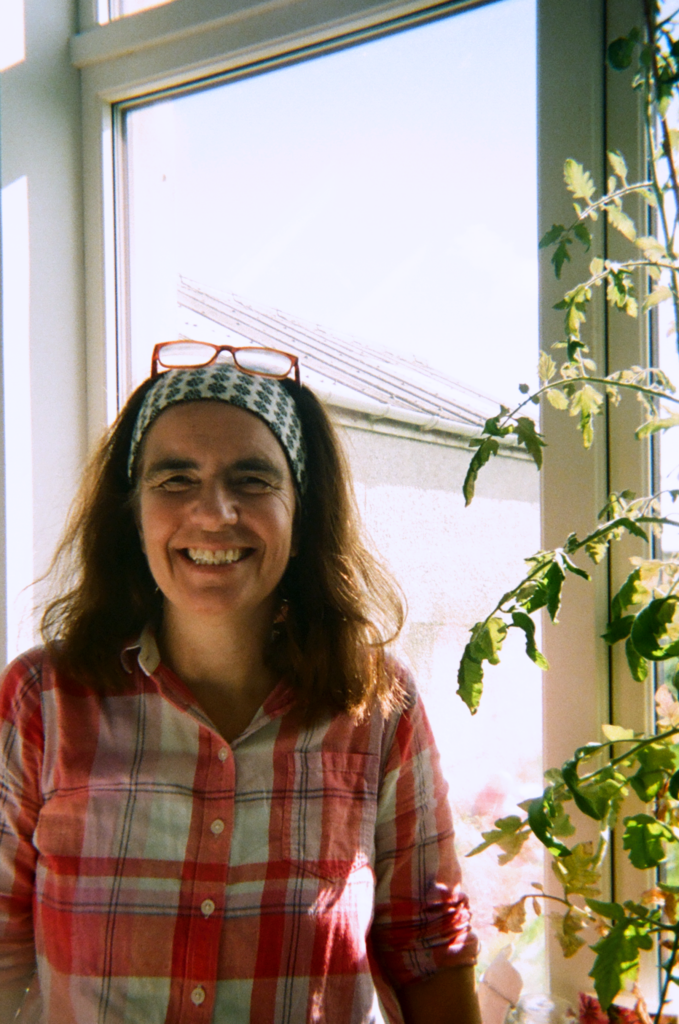
The brilliance of this region has become a constant source of comfort in Hilary’s life, particularly in recent years.
“When you’re going through difficult times in your life and other things are happening, you can go out, walk two minutes to the beach, and just enjoy it. And I still enjoy that now. I had quite a lot of losses. I lost my mum and my dad at the either end of COVID, so being able to just go outside and enjoy being outside was a big help,” says Hilary.
When I first approach the farm, I manage to lose myself in the surrounding fields for a good forty minutes. When I eventually find Hilary, I’m relieved to see I haven’t missed too much of the action. Today they’re working with the Suffolk ewes, figuring out which ones they will keep and send off with the rams, and which ones they will sell. It’s a lengthy, detail-oriented process – they have 1,000 sheep on their farm.
The sheep’s teeth, udders, and preexisting health conditions are checked. There’s also the crucial element of looking for what Hilary calls ‘personality problems’, which usually involves the sheep not liking their own lambs.
“This is the highest offence if you’re a sheep, because then you need to bottle feed the lambs. This part will drive you crazy,” says Hilary.
With 120 cows, their main enterprise is providing fresh milk to Shetlanders. The milk goes right from the farm to Lerwick, travelling 22 miles to be pasteurised, processed, and bottled. The freshness and locality of the produce brings a smile to Hilary’s face.
Along with running day-to-day operations at the farm, she works as a vet. As such, every day can look a little different. Typically, it’s farmwork in the morning, an afternoon of working in her home office, and then it’s back to farmwork in the evening.
“I didn’t have anything to do with farming when I was growing up,” says Hilary. She’s originally from an urban part of Nottingham, but credits a life-long love of the outdoors, and her early work as a vet, working with pigs and chickens, as the elements which have led her to Quendale.
Hilary first arrived in Shetland as a local vet in 1997. She then went off to work in the Pacific for a couple of years, which was “always part of the plan.” Then the stars aligned in 2000 when she was offered another job in Shetland. When she returned, she met Martin, her future husband, when she was calving one of his cows. We’re in the barn when she tells me this part of her story, and she points out the corner where the cow gave birth to twins two decades prior.
It’s always been a safe place and a happy place for people passing through
These days, Hilary’s life revolves around two Fs. “Family and the farm – and the home. That’s what I love most about being here. Especially with lockdown, that’s what we really appreciated. Also, it’s always been a safe place and a happy place for people passing through,” says Hilary. There’s only one thing she misses, and that’s trees. And I’ve noticed. They’re in very limited supply on this island.
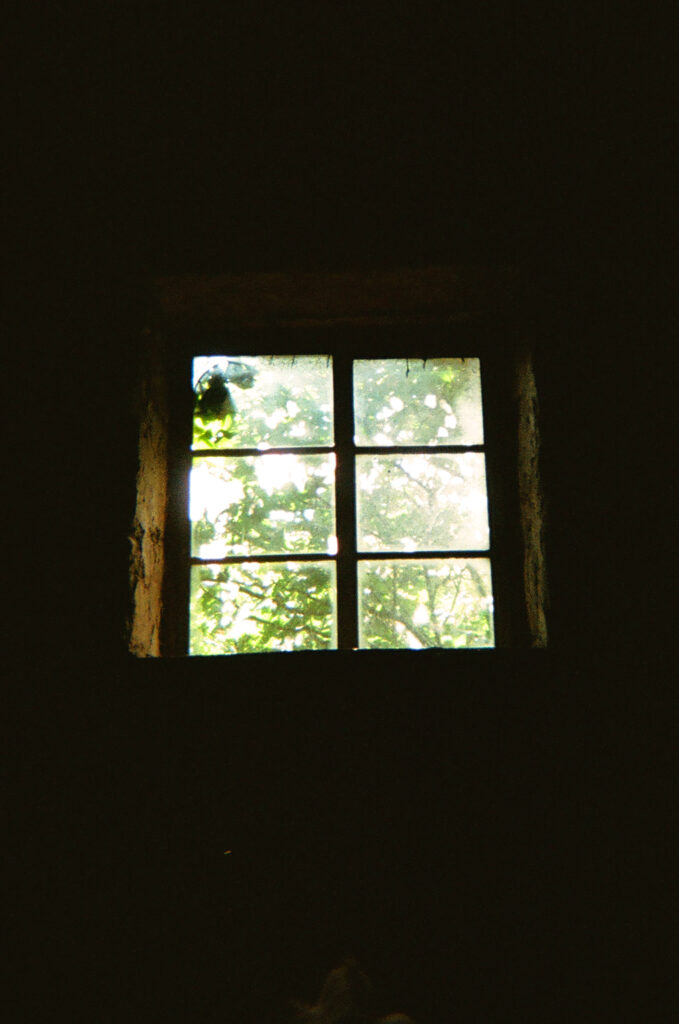
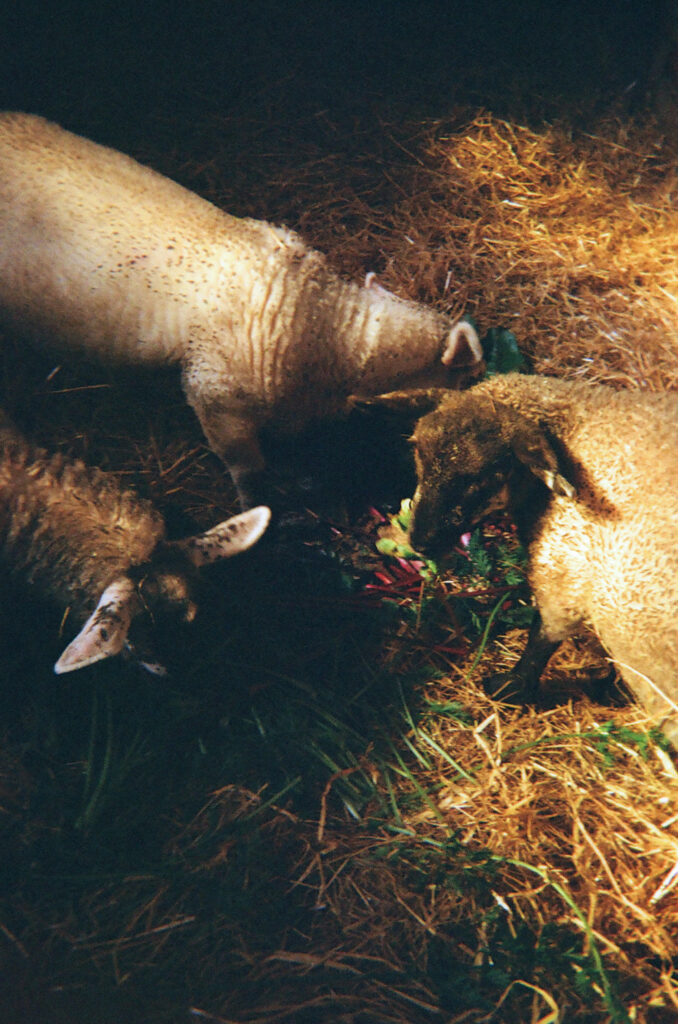
Another part of the island I become keenly aware of during my short time there is the sense of community. The residents come together in solidarity, forming tight-knit bonds. Of course, Hilary has been both witness and part of this, for the past 23 years.
“We’ve got a couple of people that help us with the garden and we know who everybody is, everybody down the road. I think that’s what is really special about Shetland. The community around that,” says Hilary.
Whether it’s a local arts festival, a grassroots initiative to regenerate the natural environment, or simply daily interactions between neighbours, Shetlanders seem to naturally and consistently show their dedication to their community. This pattern seems to extend beyond Shetland and be a feature of other remote areas, often islands. While these places may be geographically isolated, socially it’s far from it.
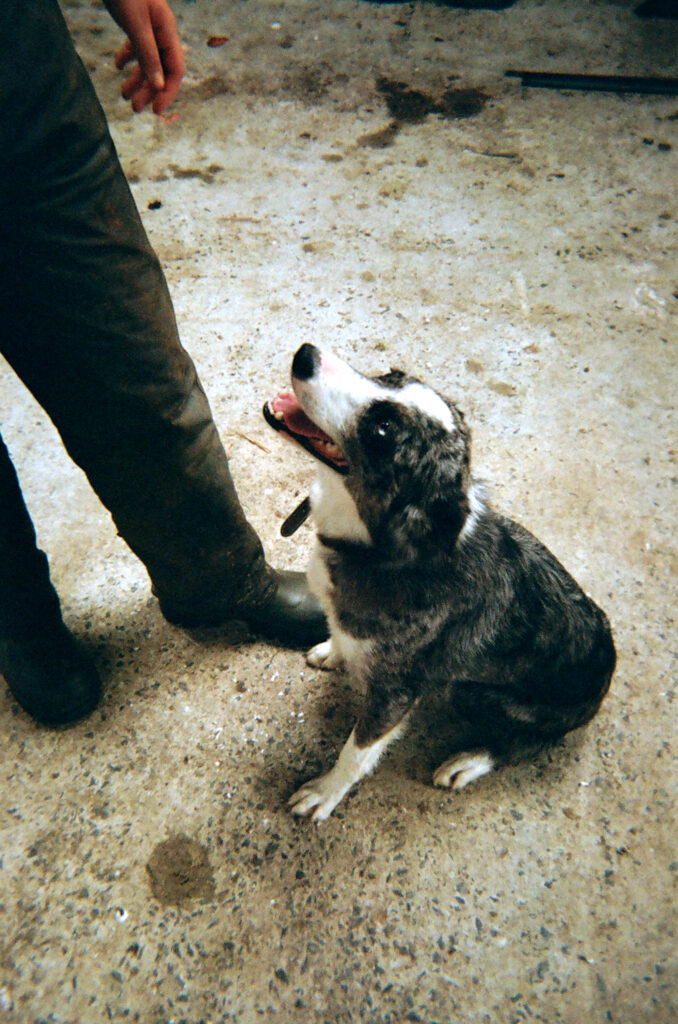
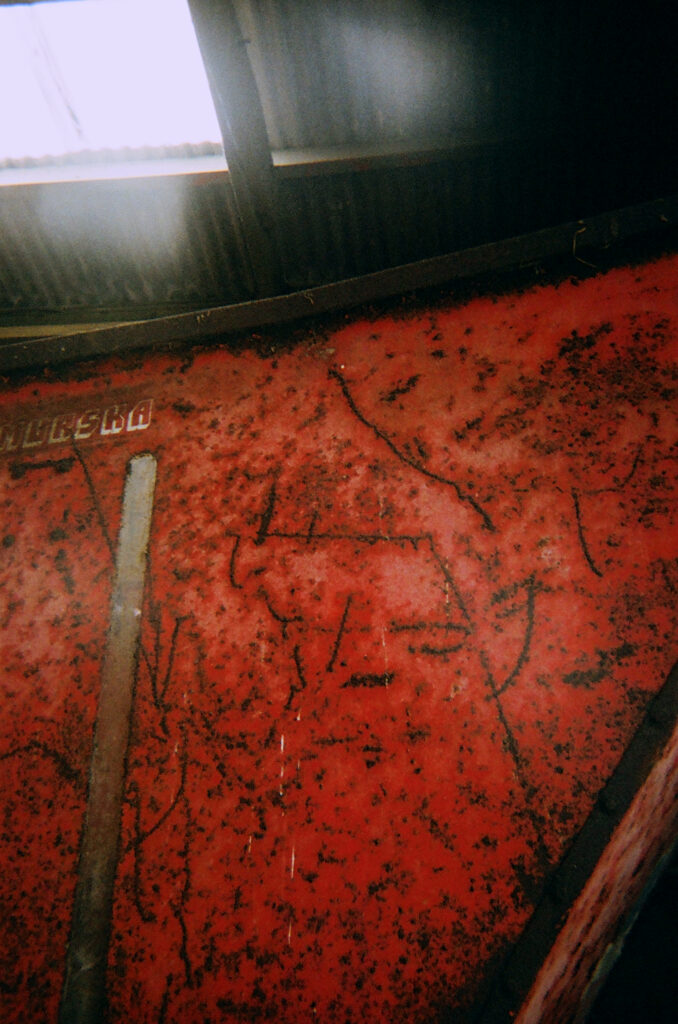
Hilary’s 19-year-old daughter Emma, is currently home for her university break. She shows me around, animatedly giving me the rundown on each piece of farm machinery. At one point, she retrieves an ancient-looking pair of sheep clippers – a family heirloom that belongs to her dad. Then she informs me that she knows a guy who can shear a sheep in less than a minute. “When I first started, he had done 15 sheep in the time I had done one,” says Emma. Now, she’s got one sheep down to the three-minute mark.
Emma’s contagious, youthful energy brings the tapestry of farm work to life. She’s fully immersed in her work as a farmer. The only thing that occasionally pulls her out of the zone is when her collie, Nell, tears onto the scene, and she has to whistle in reprimand. I watch as Nell zips around the property, through the shed doors, stopping only for pats and to inspect a small, dead bird that has fallen from the rafters.
Ah, to be a farm dog.
“At school, the boys were encouraged to go down more practical routes, and the lasses were encouraged to carry on with school”
Emma’s older brother is in finance. He works in London. When they were children, he knew that farm life wasn’t for him, and she knew that it was for her. In high school, she was encouraged to explore alternative career pathways.
“At school, the boys were encouraged to go down more practical routes, and the lasses were encouraged to carry on with school. My careers advisor told me to stay in school and go on to do a degree, and she told the boys to do the exact opposite,” says Emma.
In an earlier conversation, Hilary mentioned that often when it’s a husband-wife team working the farm, the husband is seen as the one who performs the bulk of the work, which isn’t always the case. Despite the misconception that farming isn’t ‘women’s work’, the data – as well as farmers like Hilary and Emma – clearly prove otherwise. Agriculture, forestry, and fishing account for nearly 19% of the workforce in Shetland. Across Scotland, most of the agriculture workforce consists of owner-occupiers, so those who own or rent the farm they work on. Among all working occupiers, 40% are women.
Very little research has been undertaken on women in farming, both in mainland Scotland and Shetland. When data about women in these roles has been recorded, the full range of farm work – livestock care, household management, bookkeeping, and more – undertaken by these women isn’t often captured, leading to their significant involvement in farming being underrepresented.
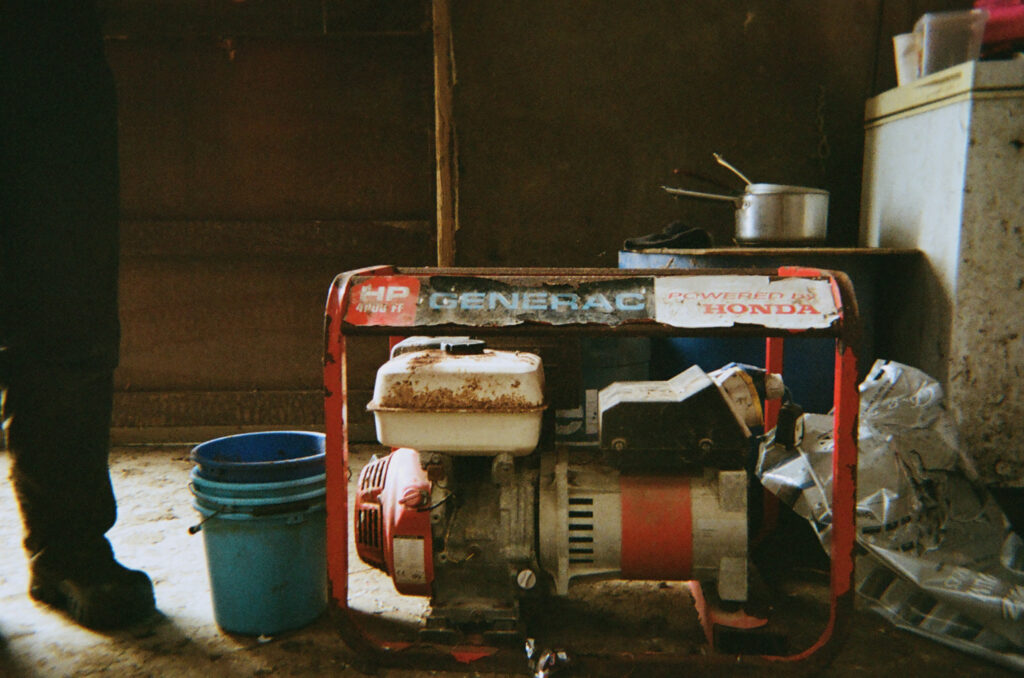
This was confirmed in a 2017 report for the Scottish Government. “Farming, and the agricultural sector as a whole, is an area in which women’s contributions are often not recognised and at a leadership level women are significantly under-represented,” the report read. These findings were based on focus groups, interviews, and surveys of women working in the crofting counties of Argyll and Bute, Highland, Moray, Na h-Eileanan Siar, Orkney and Shetland. In the survey, many women also reported feeling unwelcome and intimidated in these male-dominated agricultural environments, and like they weren’t taken seriously.
“Sometimes, when you’re told not to do something, that’s actually what makes the most change”
It doesn’t surprise me that Emma was in no way deterred by the remarks of her careers adviser.
“I can see why she said it, but I decided to do what I wanted to do. Sometimes, when you’re told not to do something, that’s actually what makes the most change,” says Emma. She cites positive role models as being fundamental to her pathway into farming. Of course, there’s her mum Hilary, but during her high school years, she was also inspired by two sisters running a farm in Bigton, just up the road.
After undertaking work experience at their farm, Emma knew she wanted to venture off the island to study agriculture.
“I was doing work experience at their farm, and the careers advisor was like, oh, don’t do work experience there, go work in a primary school or something like that. I was 14 or 15, so it was a time when you’re looking into colleges. If I hadn’t gone to Amy and Kirsty’s, I may not have gone off-island to study agriculture,” says Emma.
After completing her first year at university in Shropshire, she knows she’s made the right decision. “There are agricultural colleges in Scotland, but they’re in Edinburgh and Aberdeen, and I didn’t like the city, so I was trying to find somewhere that would work for me. Otherwise I knew I’d get on the plane and come straight back home,” says Emma.
“In Shetland, it’s very community-oriented. You just walk into people’s houses, but there you can’t just walk in, you have to knock”
Even still, there were some adjustments that needed to be made for Shropshire. At least in the early days.
“In Shetland, it’s very community-oriented. You just walk into people’s houses, but there you can’t just walk in, you have to knock,” says Emma. “Also, you notice everyone’s accents a lot more. Plus, people won’t look at you like this all the time. Here you’re just walking around and you speak to everyone. Plus they’ve got 4,000 acres of arable land. When I first went there, I was like, whoa, this is crazy big. But yeah, it’s good to go away,” continues Emma. After she graduates, she plans to return home to Shetland.
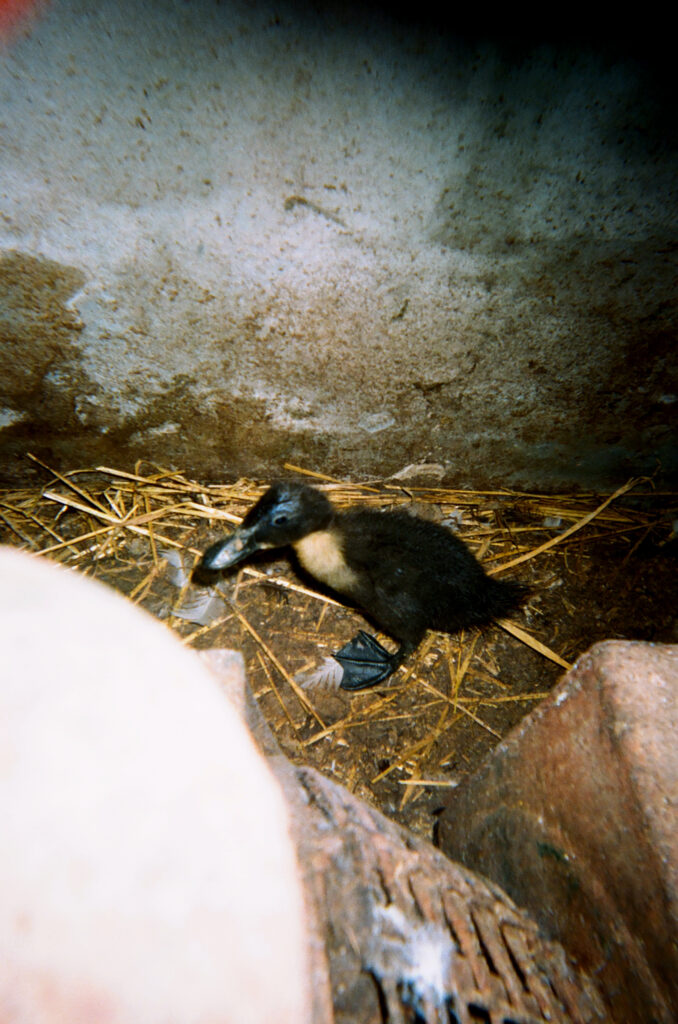
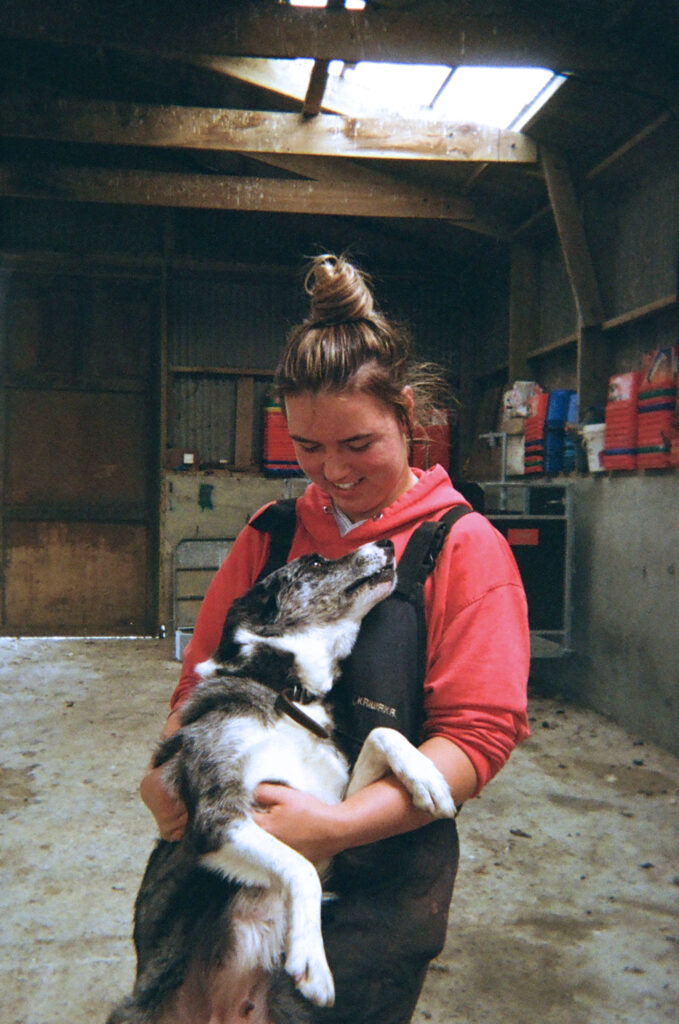
I spend the rest of the afternoon with Hilary while she relocates Dave the duck to his new flat (a shed). Later, we pull up vegetables from the ground, including carrots, chard, leeks, and the most broccoli I have ever carried. When the day is done, I trek through the field and find the white sand beach. Hilary shares my love of coldwater swimming and could not recommend this spot enough. I take off my boots and dive right in. It is the second-coldest water I have ever felt, but the sun is out, and the water is clear.
I spend the next four days wandering Shetland at my own pace, led by my curiosity and recommendations from locals I strike up a conversation with in farm shops, cafes, local cinemas, and ferry terminals. I walk parts of the Slow Ways Sanler route through Shetland, breaking off to explore other islands off the coast. Rolling hills painted with the last of summer’s sea pink wildflowers stretch out before me, while the lapping of the waves offers a soothing soundtrack when my headphones forsake me.
When the trip comes to an end, I board the ferry to Aberdeen. As the sun sets, I look out the window as the boat passes the rugged Bressay coastline. At last light, a dolphin leaps out from the waves. Followed by another, and then another.
I leave with a deep feeling of peace. With time spent in big cities, it’s easy to forget the significance of small, passing moments of human connection, but Shetland has been a reminder of what can be found when we walk, opening ourselves to the world around us.
If you’d like to learn more about Quendale Farm, visit Shetland Dairies. If you’re eager to explore Shetland, speak to the kind folks at VisitScotland iCentre in Lerwick.
Serena Coady is an award-nominated journalist based in London. Her work has appeared in The Independent, CNN, i-D, Dazed, Vox, Refinery29, Insider, South China Morning Post, and Harper’s Bazaar. Alongside telling the stories of people who live in geographical isolation, she is a solo traveller and hiker. Serena is currently undertaking a Master’s in Dramaturgy & Writing for Performance at Goldsmiths, University of London.
Last year we launched ‘Tales from a Slow Way’, a community stories initiative that enabled us to commission creatives and community groups to work together to produce original stories and content situated around Slow Ways walking routes. Each award included a donation to the organisation as well as a project fee to the creative.
Serena’s project donation went to Shetland Young Farmers.
Together, the awarded projects map the sheer diversity of walkers across the UK and highlight the importance of forging new paths.
Click here to find out more about our Tales from a Slow Ways project! Why not sign up to walk and review Slow Ways. You can also find and follow us on Instagram, Twitter and Facebook.